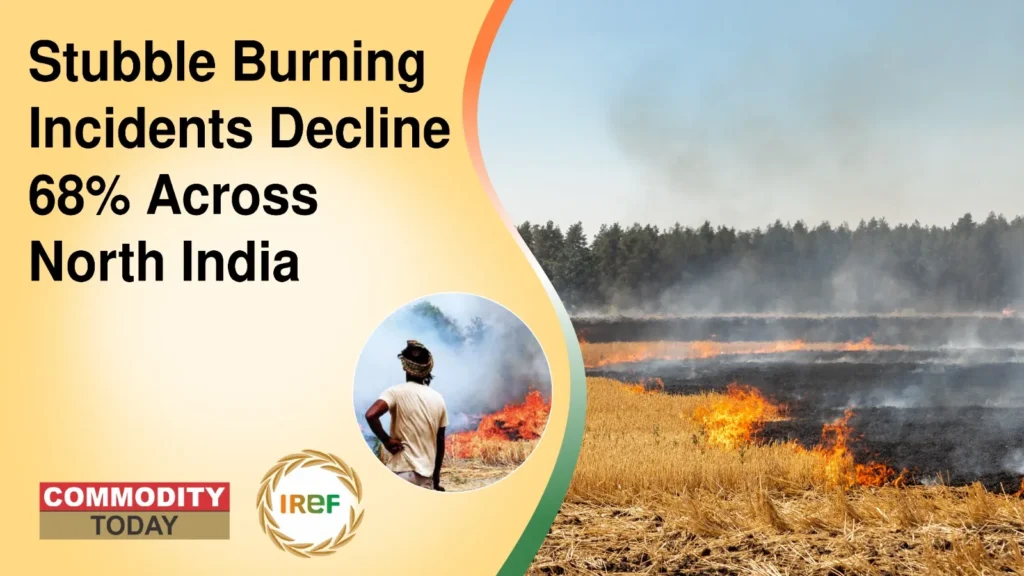In a major relief for air quality in northern India, stubble burning cases have dropped by 68% this year, marking one of the sharpest early season declines in recent years. According to official data, between September 15 and October 16, incidents of stubble burning in Punjab fell by 84% compared to the same period last year — a remarkable achievement attributed to stricter enforcement, delayed paddy harvest, and the wider availability of crop residue management (CRM) machines.
Haryana Reports Record Low Stubble Burning Cases
The state of Haryana has recorded its lowest stubble burning figures in five years, with just 25 incidents reported between September 15 and October 15 — a staggering 95% decline from 559 cases during the same period in 2024. Officials credit the improvement to delayed harvesting, enhanced monitoring, and statewide adoption of residue management practices.
Year-wise comparisons highlight the magnitude of progress. Between September 15 and October 15, Haryana reported 702 cases in 2020, 850 in 2021, 168 in 2022, 542 in 2023, and 559 in 2024. This year’s tally stands far below the five-year average of around 560, underscoring the impact of sustained efforts against crop residue burning.
District-Wise Improvements Across the State
Key paddy-growing districts like Karnal, Kaithal, and Kurukshetra have reported only two combined cases this year, compared to over 230 incidents in the same period last year.
Other districts have shown similarly sharp declines:
- Ambala: from 66 to 0
- Fatehabad: from 31 to 1
- Hisar: from 14 to 0
- Jind: from 47 to 9
- Sonipat: from 39 to 4
- Faridabad: from 23 to 3
Districts such as Rewari, Mahendragarh, Charkhi Dadri, and Mewat have reported zero cases so far this season.
Government Measures and Monitoring Intensified
Officials from the Haryana Agriculture Department revealed that nearly 80% of the paddy-growing area is now covered under residue management. Thousands of CRM machines have been distributed, and field teams are monitoring farms using drones and satellite data to prevent early fires.
In this context, a senior Haryana Pollution Control Board (HSPCB) official said, “The numbers look promising, but the next 15 days will decide the real picture. Most central Haryana districts are still harvesting.”
Farmers’ Concerns and Enforcement Challenges
While the fall in stubble burning or parali burning incidents is encouraging, the government’s strict measures have sparked resentment among farmers, some of whom allege police high-handedness. Reports indicate that 115 FIRs have been filed so far this season, with 34 cases registered in the last two days alone.
Experts Urge Caution Amid Changing Harvest Patterns
Experts believe that delayed monsoon withdrawal and late paddy maturity have naturally slowed harvesting, temporarily reducing early-season fires. However, they warn that stubble burning could increase as harvesting picks up pace toward the end of October — a period that traditionally worsens air pollution in Delhi-NCR around Diwali.
“If this low trend continues for another fortnight, it will be a significant achievement. But it’s too early to celebrate,” an HSPCB official noted.
A Temporary Relief or a Turning Point?
Last year, Haryana accounted for nearly 25% of all farm fires in Punjab and Haryana combined. This season’s dramatic reduction offers a glimpse of hope, suggesting that stricter policies and improved technology could lead to long-term change. However, the next few weeks will determine whether 2025 marks a permanent shift in stubble burning management or merely a delayed start to the season.



